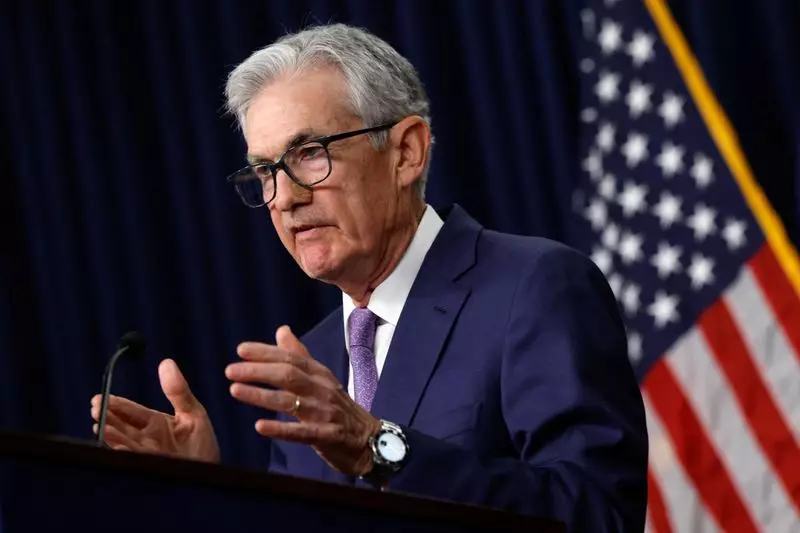In a climate of heightened political tension and economic unpredictability, Federal Reserve Chair Jerome Powell is anticipated to confront significant challenges as he navigates monetary policy through 2025. With the impending administration of Donald Trump looming, Powell faces the intricate task of ensuring the Federal Reserve’s operational independence while simultaneously avoiding open clashes with a potentially confrontational political figure. This article delves into Powell’s strategic approach, the dynamics of inflation expectations, and the broader economic implications of the Fed’s decision-making process.
As Powell steps into the complex political arena, the Fed’s primary objective remains clear—control inflation and foster economic growth. However, the intricacies of the political landscape complicate this mission. The comments made by Powell shortly after Trump’s electoral victory reflect a commitment to not inject speculation regarding the implications of potential policy shifts under a new administration. His declaration of “We don’t guess, we don’t speculate, and we don’t assume,” is indicative of the care he takes in maintaining the credibility of the institution he leads. Despite this, the dynamics surrounding fiscal policy and its potential inflationary effects are leading to a reassessment of future interest rates.
As the Fed wrestles with new projections, officials exhibit a more careful stance surrounding anticipated monetary easing movements. The latest decisions indicate a drop in expectations for interest rate cuts, aligning closely with increased inflation forecasts. This shift in outlook is vital as Powell and his colleagues aim to not only project credibility but also effectively respond to incoming economic data without overtly compromising the Fed’s independence.
Recent forecasts indicate an anticipated inflation rate of 2.5% for 2025—a slight increase from prior projections and a clear indication of a cautious attitude towards economic resilience under Trump’s policies. Influencing this hedge against inflation appears to be Trump’s proposed regulatory changes, particularly tariffs and heightened immigration restrictions. In this context, tariffs can inevitably escalate pricing, while control measures on labor supply might result in wage surges, further exacerbating inflationary pressures. Powell’s approach here reflects a nuanced understanding of macroeconomic interdependencies, suggesting that while direct impacts from political changes are not immediately evident, the Fed cannot afford to remain ignorant of underlying economic trends.
Moreover, analysts perceive this cautious federal stance as a reflection of lessons learned from the tumultuous trade wars witnessed during Trump’s initial term, where rapid shifts led to unwarranted rate cuts. In an evolving economic landscape, Powell must weigh the implications of policies echoing past experiences while formulating a responsive strategy that takes inflation trends into account.
The Fed’s independence is a crucial pillar of its effectiveness in managing monetary policy. Powell seems acutely aware of the temptations to cross into political waters; avoiding public positions that might suggest biases is essential. Reports that Powell has counseled caution in public communications demonstrate an understanding of the delicate balance required to preserve institutional independence while maneuvering through a politically charged environment.
The Fed’s approach is not only about avoiding speculation on Trump’s fiscal policies but also about maintaining a reputation for empirical, data-driven decision-making free from the whims of political influence. It underlines the importance of public perception, especially considering the recent history of volatility and backlash experienced by the Fed in the wake of public sentiment against deep rate cuts.
Trump’s proposed economic agenda, which includes extensive deregulation and increasing domestic energy production, is suggested by his advisors to mitigate inflationary pressure. However, this assertion disputes conventional economic wisdom. There is a concern that as businesses navigate rising costs amidst heightened employment, adjustments in pricing practices will intensify inflationary trends. Economists emphasize that full employment conditions could amplify the passing of costs to consumers, evoking predictions that inflation might become a more persistent national characteristic.
The broader economic environment plays an essential role—analysts argue that unlike previous years characterized by lackluster inflation, the current economic backdrop is marked by higher inflation rates. This vital shift necessitates a nuanced approach from the Fed, requiring an attentive eye on how businesses adjust pricing in response to changing costs.
As Powell seeks to steer the Federal Reserve through the complexities of a new political era while prioritizing economic stability, the balancing act must consider both immediate and far-reaching consequences of monetary policy. Adapting to the evolving economic climate will demand careful assessments of external influences, underscoring the intricate relationship between political actions and monetary responses.

